Are you fascinated by the mysterious creatures that haunt the wild landscapes and folklore worldwide? Wolves, these majestic creatures, have fascinated and inspired awe for centuries. However, despite their mesmerizing allure, wolves face various challenges threatening their existence in our modern world.
A wolf’s world is filled with intriguing facts and myths, from their remarkable intelligence to their important role as apex predators. Human-induced threats include habitat loss, hunting, and climate change, but these incredible animals remain a challenge. Wolf populations are often misunderstood, despite their significant cultural and ecological significance.
In this exploration, we will navigate through the habitats they occupy, uncover the intricate ways they communicate, and even debunk a few common misconceptions about these fascinating creatures.
Be prepared to discover how wolves, these wilderness icons, navigate a changing world. Follow along as we unveil the truths, dispel the myths, and uncover the compelling saga of these mesmerizing predators. Stay tuned for an insightful journey into the captivating world of wolves.
What is a Wolf?
Wolves, scientifically classified as members of the genus Canis, are apex predators known for their social behavior and adaptability across diverse habitats. These canids belong to the Canidae family, sharing ancestry with domestic dogs, coyotes, and foxes.
Characterized by a powerful physique, keen senses, and a diverse coat of fur that ranges from gray to brown, wolves exhibit remarkable intelligence and communication skills. Living and hunting in packs, they display intricate social hierarchies and cooperative strategies for survival.
In addition to their prowess at hunting large herbivores like bison and moose, wolves are recognized as key indicators of environmental health because they maintain a crucial ecological balance by controlling prey populations.
Despite their essential role, wolves face threats such as habitat loss, human encroachment, and misconceptions leading to persecution. Understanding these magnificent creatures is crucial for their conservation and preserving our natural world.
Wolf Abilities
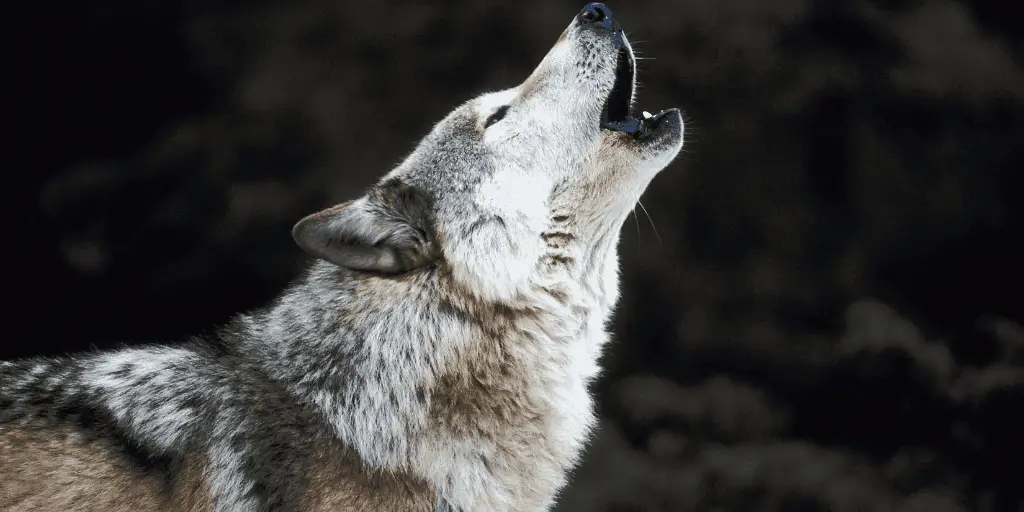
Wolves possess remarkable abilities that contribute to their survival in the wild. Let’s explore the incredible capabilities of wolves.
Jumping: Wolves are incredibly agile creatures that can leap distances of up to 12 feet horizontally in pursuit of prey. This exceptional athleticism aids them in navigating their surroundings and closing in on their target with surprising precision.
Bite Force: Imagine a wolf’s bite – it’s immensely powerful, packing a force of around 1,500 pounds per square inch! This formidable bite isn’t just for show; it’s a crucial tool for hunting and defending against potential threats.
Howling Range: Ah, the eerie yet captivating howls of wolves! These haunting calls can carry vast distances, reaching 10 miles when conditions are just right. It’s their way of communicating with pack members and marking territory.
Crossbreeding: Now, here’s an interesting tidbit. Wolves and coyotes, part of the same family, can actually mate. The resulting offspring, often called “coywolves,” inherit a mix of traits from both species, showcasing the diversity within the Canidae family.
These remarkable abilities highlight the adaptability and survival skills that make wolves such resilient and adaptable predators in their diverse habitats.
Wolves and the Environment
Wolves and the environment share a fascinating relationship, deeply connected over millennia. Now, imagine this intricate balance disrupted if wolves were to disappear from their ecosystems.
The ripple effects are profound when we ponder the hypothetical scenario of wolf extinction. These majestic creatures play a crucial role as apex predators.
In the absence of these habitats, herbivore populations like deer and elk can surge unchecked. With their numbers soaring, these herbivores will destroy forests and alter the landscape.
Such ecological shifts could harm songbird populations, insects, and other animals reliant on these habitats for survival. It’s a domino effect that echoes throughout life’s delicate web.
On another intriguing note, while Native Americans revered and respected wolves, there’s no concrete evidence that they domesticated them like dogs descended from wolves.
Instead, historical records indicate a deep cultural connection, often reflected in myths, legends, and spiritual beliefs, acknowledging the wolf’s prowess and importance in their lives.
Wolf Senses & Biology
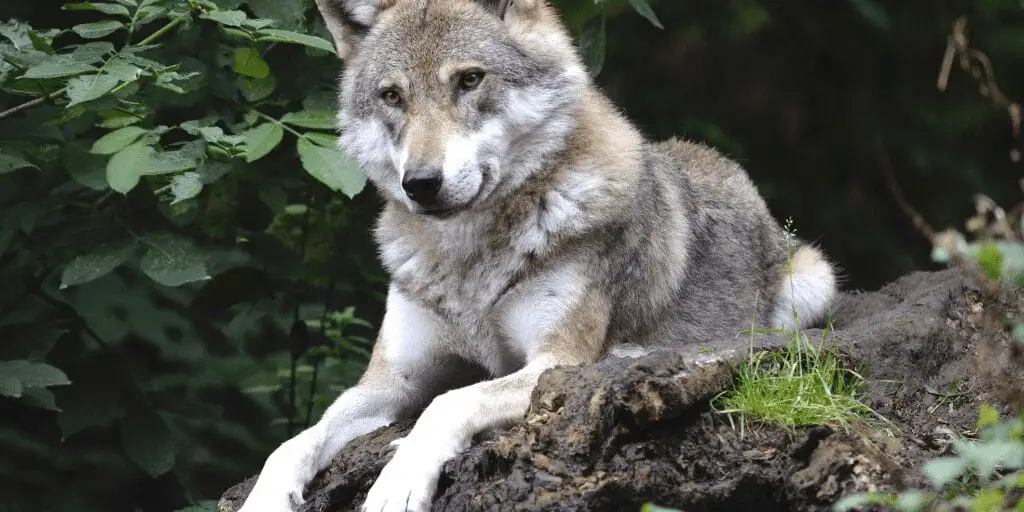
Wolves possess remarkable sensory abilities and biology tailored to their survival in the wild. Their acute senses and physical attributes are finely tuned for hunting and thriving within their diverse habitats.
From their excellent sense of smell and exceptional hearing to their strong jaws and muscular bodies, wolves are well-equipped predators at the top of the food chain.
Their social behavior and communication methods further illustrate their fascinating biology, as they live and cooperate within packs, relying on intricate methods of interaction and hierarchy.
Understanding these elements of wolf biology helps unravel their role in ecosystems and their survival strategies.
Their acute sense of smell can range anywhere from 1 to 1.5 miles away, aiding them in tracking prey, communicating with others, and identifying territories. When we think about the characteristics of a wolf, they exhibit various traits that help them thrive in their habitats.
Wolves typically have a robust and muscular build, strong jaws, sharp teeth designed for tearing flesh, keen eyesight suited for nocturnal hunting, and dense fur for insulation in different climates.
Among the various wolf species, the largest is the Mackenzie Valley wolf, also known as the Northwestern wolf. These wolves can weigh anywhere from 100 to 175 pounds (45 to 79 kilograms), making them formidable in size and strength compared to other wolf species.
In terms of exceptional cases, several instances of extraordinarily large wolves have been recorded throughout history.
These wolves, often exceeding the typical size, have weighed over 200 pounds (90 kilograms) and showcased impressive physical stature, contributing to the lore and fascination surrounding these majestic creatures.
Wolf Behavior
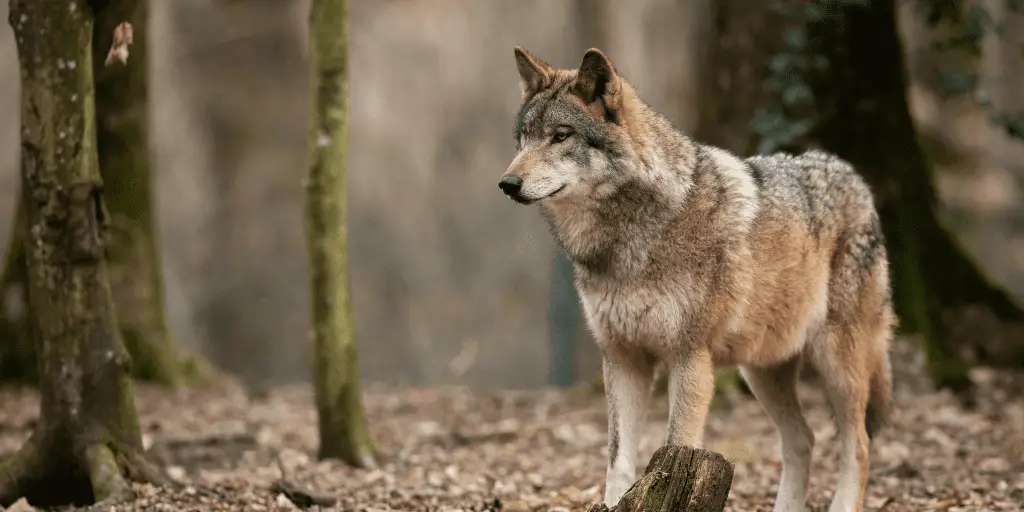
Wolves are highly social animals that organize themselves into packs. These packs are structured with a hierarchical order, typically led by an alpha male and an alpha female. Pack dynamics are crucial for survival, as they collaborate in hunting, raising pups, and defending territories.
Their hunting behavior is often a collective effort. Wolves are skilled predators that employ various strategies, including teamwork, stealth, and endurance, to hunt and capture prey.
Working in coordination, they can take down larger animals such as elk, bison, and moose, which would be challenging for a single wolf to tackle alone.
Communication among wolves involves a variety of vocalizations, body postures, and scent markings. Their unique howls serve as a means of long-distance communication, allowing them to alert pack members, defend territory, and coordinate movements effectively.
Also, scent marking is used to establish territories and convey information to other wolves.
Moreover, When a wolf “imprints,” it refers to the process where wolves develop strong social bonds, particularly during their early stages of life.
This bonding period is vital, especially between the wolf pups and their parents or caregivers, establishing trust and fostering a sense of family within the pack.
Typically, a wolf litter comprises around four to six pups, although litter size can vary based on factors like environmental conditions and prey availability.
The entire pack contributes to raising the young, with adult members providing care, protection, and food for the pups.
This nurturing behavior aids in the development of the pups, allowing them to learn essential survival skills within the pack structure, ensuring the continuity of the species and maintaining the social fabric of the wolf community.
Wolves & Humans
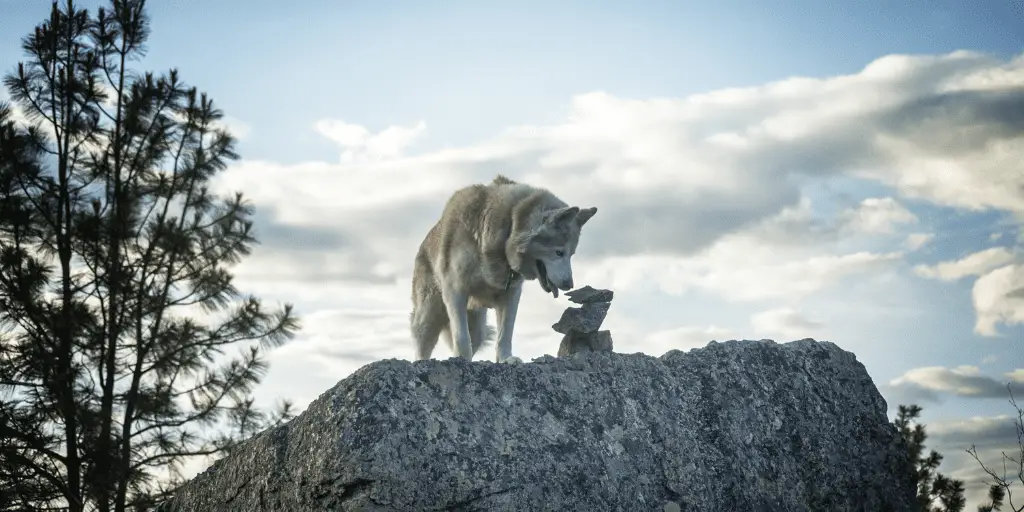
Historically, wolves have been both revered and feared by various human cultures. Some ancient societies idolized wolves, attributing them with symbolic significance, while others saw them as competitors for resources or threats to livestock and safety.
Over time, human encroachment into wolf habitats and the decline in prey populations have often led to conflicts between humans and wolves. This conflict has resulted in the elimination of wolves from many areas, diminishing their populations and fragmenting their habitats.
However, attitudes towards wolves have evolved. Conservation efforts, scientific understanding, and cultural shifts have prompted renewed interest in preserving these apex predators.
Wolf conservation initiatives aim to protect their habitats, mitigate conflicts with humans, and educate communities about the importance of wolves in maintaining ecological balance.
Understanding wolf behavior is crucial for personal safety in the unlikely event of a wolf encounter. Techniques to mitigate such encounters include remaining calm, avoiding eye contact, and slowly backing away without turning one’s back.
Raising arms and making noise may deter an approaching wolf. In extreme cases, bear spray or loud noises may be required, but such encounters are extremely rare.
Regarding riding wolves, it’s important to clear up myths and misconceptions. Wolves are wild animals and are not suited for riding or domestication. Their behavior, physiology, and natural instincts make any interaction of this nature unsafe and impractical.
Understanding the realities of coexisting with wolves empowers individuals to approach encounters, however rare, with knowledge and caution, ensuring the safety of both humans and these magnificent creatures.
Wolves By Region & Type

Female wolves are referred to as “she-wolves” or simply “wolves.” However, within a wolf pack, the dominant breeding female is commonly known as the “alpha female.”
A coywolf, also known as an eastern coyote, is a hybrid species resulting from the mating of coyotes and wolves. They display a mix of physical traits and behaviors from both species.
Arctic wolves, inhabiting the Arctic regions of North America, primarily feed on muskoxen, Arctic hares, and caribou, adapting to the harsh, frozen landscapes they call home.
Wild wolves have returned to Germany after being extinct for over a century due to conservation efforts. These wolves are making a gradual resurgence, predominantly in forested areas.
Wolves are apex predators, but occasionally, other large predators like bears or even other wolves can prey upon them, especially in situations where wolf pack dynamics are disrupted.
While primarily carnivorous, wolves occasionally consume fruits and vegetables, but their diet primarily consists of meat sourced from hunting ungulates such as deer, elk, and moose.
The maned wolf in South America resembles a large fox due to its long legs and reddish skin. Despite its name, it’s not closely related to wolves; instead, it’s the largest canid in South America.
Standing around 3 feet tall at the shoulder, the maned wolf is remarkably tall, showcasing its distinctively long legs among canid species.
A beta wolf is typically a subordinate member in a wolf pack, ranking below the alpha pair. They assist in maintaining pack unity but are not in the highest rank.
The timber wolf, also known as the gray wolf or the western wolf, is a subspecies primarily found in North America, known for its adaptability and resilience.
Red wolves are adept swimmers, utilizing their swimming skills to traverse water bodies in search of prey and suitable habitats.
The maned wolf is categorized as near-threatened, facing habitat loss and fragmentation, but they are not classified as endangered. Efforts are ongoing to protect and conserve their populations.
In their various forms and habitats, wolves offer a fascinating glimpse into the diverse world of canids and their roles within ecosystems.
Wolf Conservation Status & Protection
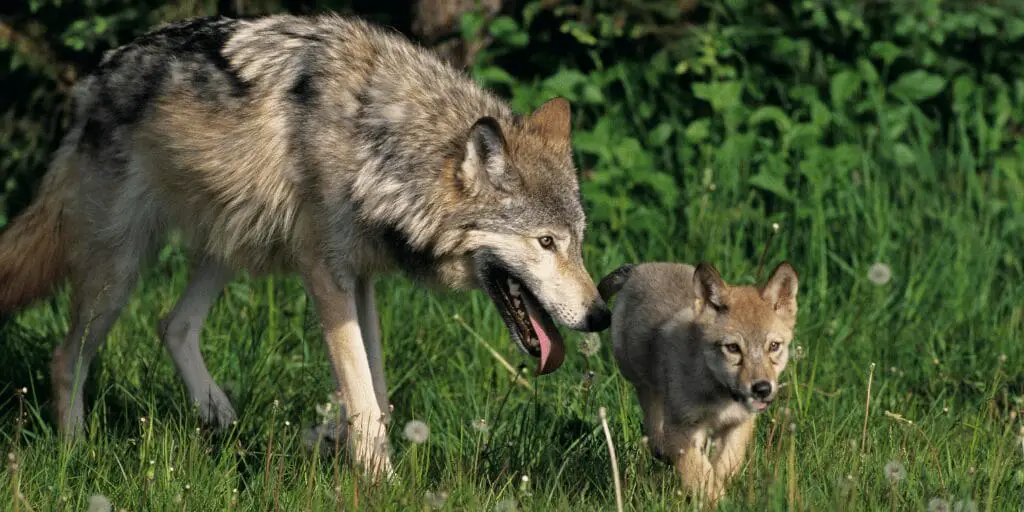
Wolf conservation and their protected status remain crucial in preserving ecological balance and biodiversity. Protecting wolf populations is vital as they play a crucial role in ecosystems, regulating prey populations and maintaining ecological balance.
Their presence indicates healthy and diverse habitats, contributing to overall biodiversity. While the gray wolf has progressed in some regions, such as the Great Lakes and Northern Rockies in the United States, several populations still face threats and remain endangered.
The Ethiopian wolf, in particular, is critically endangered, with fewer than 500 individuals remaining in the wild.
Wolves are not suitable as pets due to their wild nature, specialized needs, and potential danger they may pose. They’re highly social animals with complex behaviors best suited for life in their natural habitats.
Protecting and conserving wolves involves various measures, including habitat preservation, anti-poaching initiatives, public awareness campaigns, and collaborative conservation programs.
These endeavors aim to ensure the survival and well-being of wolf populations across their range.
Maintaining protections and implementing conservation strategies are imperative to safeguard these iconic and ecologically significant creatures.
Their conservation serves not only the wolves themselves but also contributes to our planet’s ecosystems’ overall health and resilience.
Conclusion
Wolves are pivotal in our ecosystems’ intricate web, contributing to biodiversity and ecological equilibrium.
Their conservation status varies across regions, with gray wolves seeing a resurgence in some areas but remaining endangered in others, while the Ethiopian wolf teeters on the brink of extinction.
Protecting these species is crucial, as they shape environments by regulating prey populations and maintaining ecological health.
Understanding their biology, behavior, and crucial role in the environment emphasizes the necessity of conservation efforts.
Efforts must focus on habitat preservation, anti-poaching measures, and public awareness campaigns. Importantly, while wolves are revered creatures, their wild nature renders them unsuitable as pets.
Safeguarding wolves is not just about preserving a species; it’s about nurturing ecosystems and ensuring a balanced, thriving planet.
